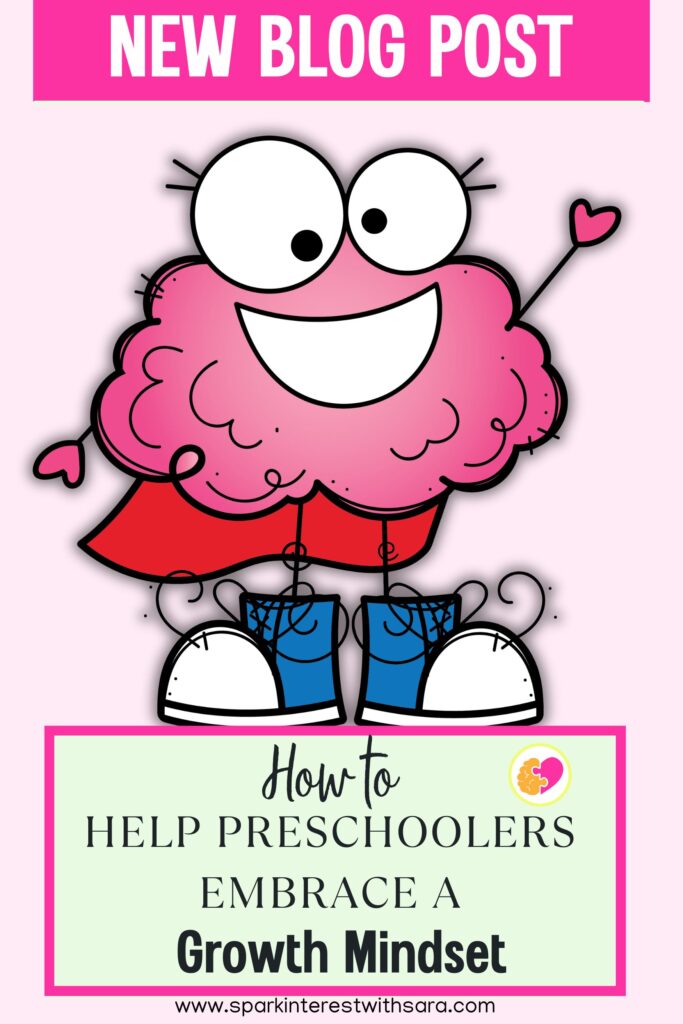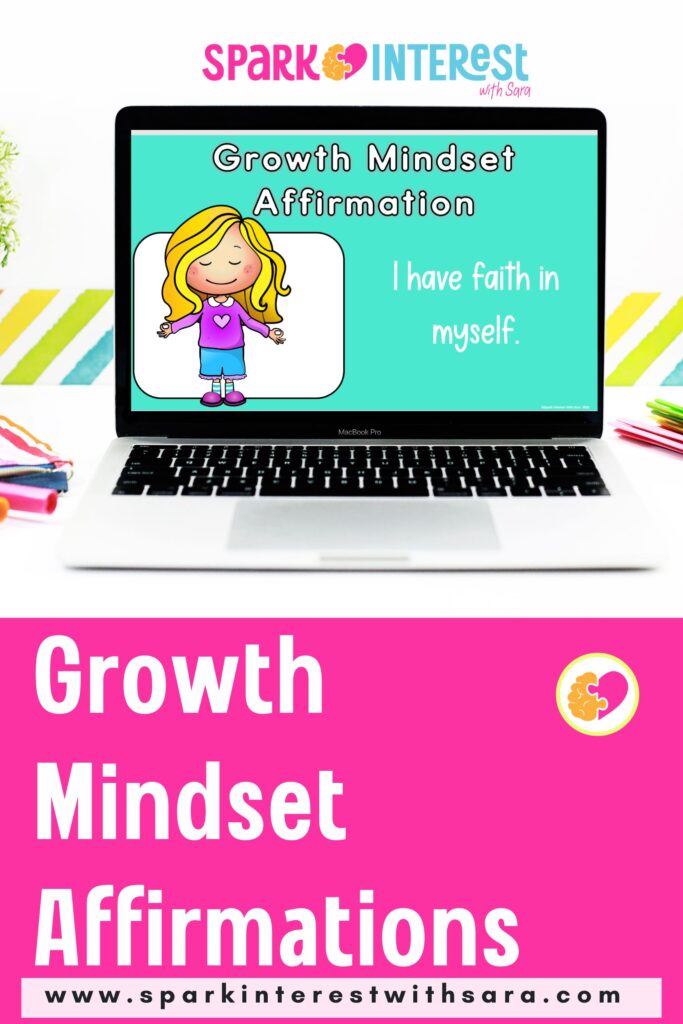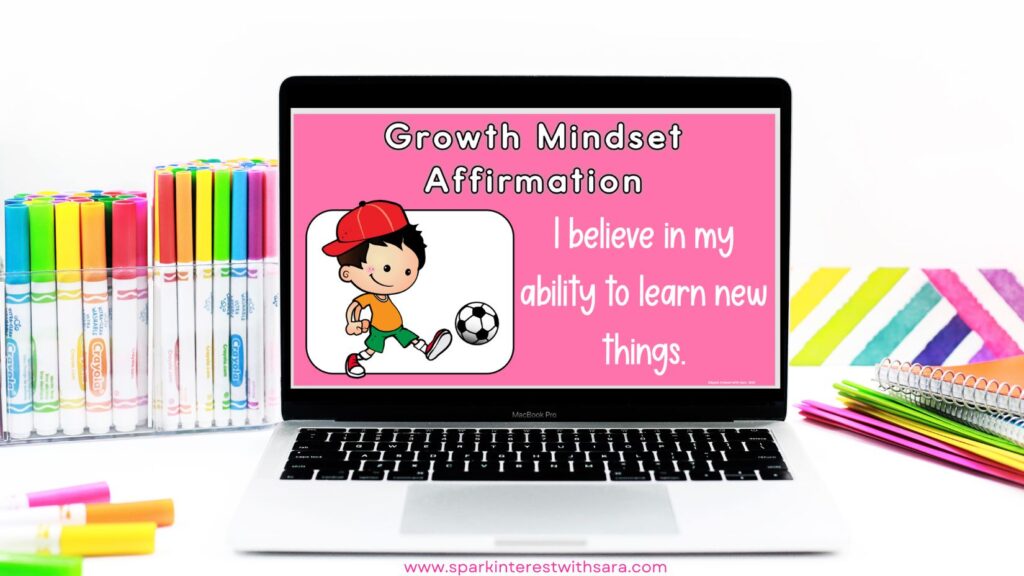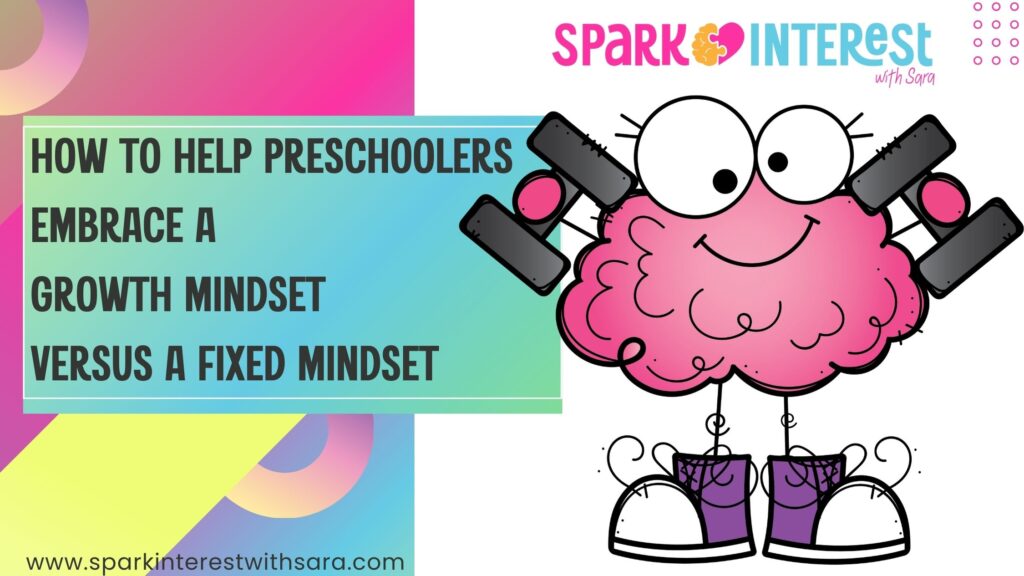“I can’t do it!” or “I can’t do it…yet!”
Which one sounds more familiar in your preschool classroom?
That tiny word—yet—can make a world of difference in how children view themselves and their abilities. It’s the beginning of teaching something powerful: the difference between a growth mindset versus a fixed mindset.
When we help preschoolers understand that struggling is part of learning, and that mistakes are stepping stones—not stop signs—we open the door to resilience, curiosity, and confidence. Embracing a growth mindset means showing our little learners that their brains can grow, that effort matters, and that they can do hard things… just maybe not yet.
In this post, we’ll explore practical, playful ways to nurture a growth mindset in the early years—and help your students shift from “I can’t” to “I’m still learning.”

Inviting our preschoolers to embrace a growth mindset isn’t always easy. At this age, they’re learning so much—how to hold a pencil, take turns, recognise letters—and with all that growth comes big emotions and frustration. But that’s exactly why it’s the perfect time to introduce the concept of a growth mindset versus fixed mindset. When we teach them how to stay in a growth mindset—through simple language, stories, and everyday experiences—we give them tools they can carry for life.
Before I jump in to sharing how to help our students develop a growth mindset, I wanted to make sure you’ve gotten your hands on my Free Kindness Classroom Posters. If you haven’t got these super cute posters yet, click on the image below to download them!

What’s Growth Mindset?
Dr. Carol Dweck, a Stanford professor and one of the founders of the idea that humans have two different types of mindsets, explains that we all have either a “growth” or “fixed ” mindset. She defines the “growth mindset” as the core belief in your abilities and that you can develop intelligence through hard work and trial and error.
She also goes on to say that a “fixed mindset” is where intelligence is inherent and cannot be developed. A child who believes that they are not good at something and that they will never be good at it because their brain just “doesn’t get it.” I’m sure you can see how talking to themselves in that way can create many blocks to learning.
That’s why we want to keep our little learners in the growth mindset bubble. We want them to develop and grow as they work on difficult tasks and problems.
Some growth mindset characteristics are:

- Learning from failure
- Belief in oneself
- Positivity
- Resilience and perseverance
- Excitement for challenges
Growth Mindset vs. Fixed Mindset Examples
I have witnessed many examples of both a growth mindset and a fixed mindset from my years in the preschool classroom, as I’m sure you have too. It’s hard not to when children come in so little and are learning so many things, and they are expected to walk out of the classroom at the end of the year doing so many more things. If you still aren’t sure what this looks like, here are two examples of growth mindset versus fixed mindset that will demonstrate how it relates to our little learners.
Growth Mindset Example
Joy is working on her letter formation and determining the name and sound that each letter makes. At the beginning of the year, she couldn’t recognize letters or write any of them. She struggled whenever we worked on letters and seemed to be discouraged at times. However, Joy sang the alphabet song whenever possible, worked at the letter station during center time often, and happily worked with the teacher in small groups to practice letters. By the end of the year, Joy knew her letters. She may not know every sound, but she kept a growth mindset.
Fixed Mindset Example
Layla is also working on her letter formation, determining the names and the sounds of each letter like Joy was. At the beginning of the year, she was much like Joy and couldn’t recognize letters or write any. She struggled in circle time to practice with the rest of the class and would often just sit quietly when the alphabet song came on or as the class repeated letters. Layla often said, “I don’t like letters,” or “I’m never going to learn any letters.” Whenever she went to centers, she stayed clear of the letter center. During small groups, she often said: “I’m not doing this.” and refused to participate. At the end of the year, Layla only knew a handful of letters.
Joy and Layla are imaginary students, but the situations above are very common in the preschool classroom. You have probably had (or have) Joy and Layla in your classroom. Helping students develop and stay in a growth mindset will make a world of difference!
Why Growth Mindset Matters
Helping young children develop a growth mindset isn’t just about classroom success—it’s about nurturing skills they’ll use throughout their lives. When we support preschoolers in shifting from a fixed mindset (“I’m just not good at this”) to a growth mindset (“I’m still learning this”), we set them up with the belief that they can grow, change, and improve with effort.
Lifelong Love of Learning
With a growth mindset, students are often more open to new information and learning in the future. They achieve things through hard work and are more likely to dig deeper for knowledge, try new things and experiment with ideas. They will begin to understand the importance of persistence and determination.
If we want to change the way we learn, we have to change the way we think. Being aware that talents and intelligence can be developed will allow our students to see that they can learn anything! That is a vital mindset to have, because this gives us the freedom to explore, experience and achieve more in life.
Ability to Evolve Outside the Classroom
When students have a growth mindset, it doesn’t just disappear when they leave preschool or the classroom in general. If they are in a constant state of growth, they will be more well-rounded outside of school. They understand how the process of trial and error works and will use it to grow in their personal lives. Just think about a child learning to ride a bike, create using clay or learn to play the piano; a growth mindset will be an asset in developing these skills.
Practical Ways to Nurture a Growth Mindset in Preschool
Here are some tried-and-true strategies you can weave into your daily routines to help your little learners develop a growth mindset versus a fixed mindset:
1. Use Growth Mindset Videos and Books
Stories are powerful teaching tools for preschoolers. Use picture books and age-appropriate videos that show characters facing challenges, making mistakes, and persevering. Look for titles that highlight effort, problem-solving, and bouncing back after setbacks. After reading or watching, talk with your students about what the characters learned and how they showed a growth mindset.
Videos about Having a Growth Mindset
Class Dojo is not only a great classroom management tool, but they have a great growth mindset video series that is easy for students to understand and has some great characters!
Gromo and friends is another great resource. With two videos, they talk about the “power of yet” and how we want to focus on depth over speed!
This video uses a seed as an example and is 100% relatable to preschoolers. They’ll watch as the seed continues to stay in a growth mindset and eventually grows into a beautiful plant.
This catchy tune and fun brain break all about the power of yet, can be used in the classroom, and will get your children motivated and ready to learn.
Books about Developing a Growth Mindset versus Fixed Mindset
- The Power of Yet By Maryann Cocca-Leffler
A great book that helps students see that it’s ok not to be able to do something yet. This little pig is trying to learn exactly how to conquer frustration even when he can’t do everything he thinks he can!
- Growth Mindset Ninja By Mary Nhin
A wonderful read that helps students learn about growth mindset versus fixed mindset: it helps students develop valuable life skills and is fun and entertaining for this preschool age group.
- Beautiful OOPS! By Barney Saltzberg
A book that helps students (and adults) learn that it is ok to make mistakes, and sometimes a little mistake may turn into a beautiful piece of art!

2. Introduce Growth Mindset Affirmations In The Classroom
Simple, growth mindset affirmations can help children reframe their thinking and build resilience. Phrases like “I can try again,” “Mistakes help me learn,” or “I get better with practice” work wonders—especially when said out loud during morning meetings or posted in your classroom Affirmation Station. Repeating these regularly helps them become part of your students’ internal dialogue. You may start by including them in different places throughout your day. Some of these places may include:
- Morning Line Up
- Morning Meetings
- Afternoon Lineup
- Before Certain Subjects or Activities
- Create an Affirmation Station
3. Highlight Real Life Examples of Growth Mindset
Share age-appropriate stories of real people (or even yourself!) who achieved something through practice and persistence. It could be someone learning how to ride a bike, paint, bake, or play an instrument—not just being “naturally good” at it. Help children see that effort, not talent, is what leads to growth.
A great way to help students understand exactly what a growth mindset looks like is to notice and highlight students who are displaying a growth mindset. You may give them process praise which is when you praise the process they took to finish their work or accomplish a task.
You may say something like, “I can see how much effort you put in and how much you have improved.” or “You really looked at your old worksheet and tried to find ways to improve your work.”
Whether you choose to highlight students, create a beautiful growth mindset affirmation station, or have students repeat growth mindset affirmations throughout the day, allowing for positive self awareness and self talk activities will benefit them in the long run!
4. Celebrate the Process, Not Just the Product
Instead of focusing on whether something is “right” or “finished,” celebrate your students’ effort and progress. Use phrases like “You worked so hard on that!” or “I noticed how you kept trying even when it got tricky.” These little shifts in feedback can reinforce the value of persistence over perfection.
5. Model Growth Mindset Language Yourself
Let students hear you using growth mindset language throughout the day. Say things like, “Hmm, this is tricky—I’m still figuring it out,” or “I made a mistake, but I’ll learn from it.” When they see you responding to challenges with curiosity and confidence, they’re more likely to do the same

6. Create Safe Spaces for “Oops” Moments
Make your classroom a place where mistakes are expected and accepted. Whether it’s through art, block play, or group games, build in low-stakes opportunities for problem-solving, trial and error, and second chances. Praise the trying—not just the winning.
Growth Mindset Versus Fixed Mindset
Helping preschoolers understand the difference between a growth mindset versus a fixed mindset may seem like a big concept—but it starts with small, everyday moments. Each time you encourage effort over outcome, model how to bounce back from mistakes, or celebrate the trying instead of the perfect, you’re planting seeds that will grow into resilience, confidence, and a love of learning.
Remember, it’s not about getting it right every time—it’s about creating a classroom where children feel safe to try, stumble, and try again. That’s where real growth begins.
You’ve got the tools. You’ve got the heart. And your little learners? They’ve got the potential to soar.
Want more ideas on supporting Social Emotional Development in your Preschool Classroom? Check out the blog posts below:
19 Books to Teach Growth Mindset to Children



